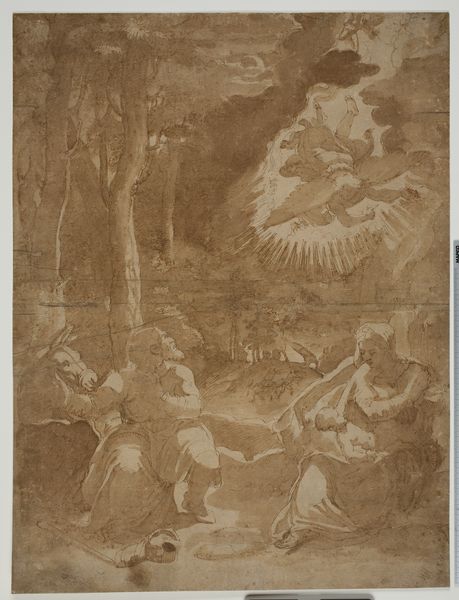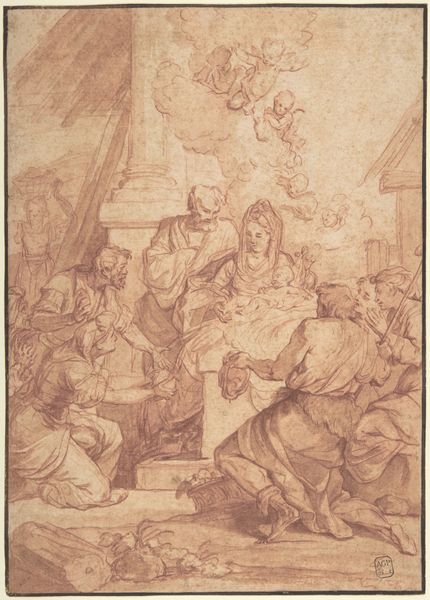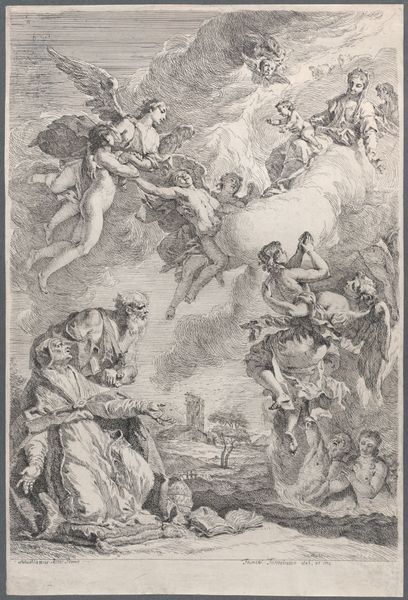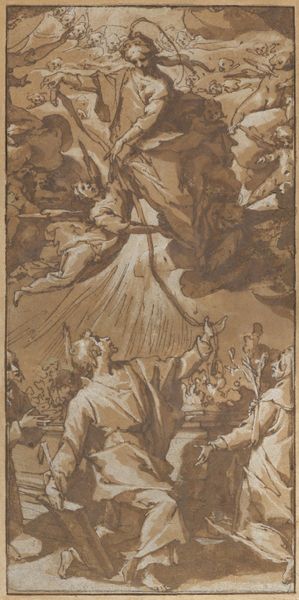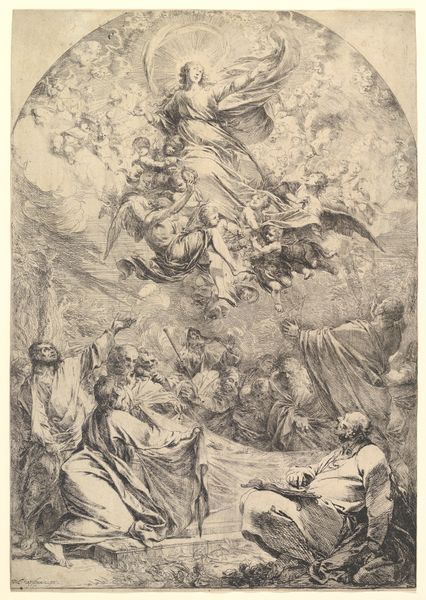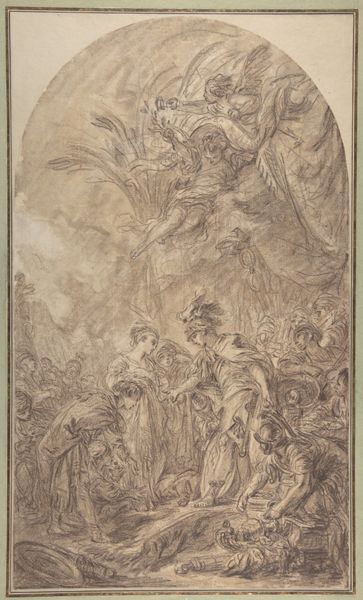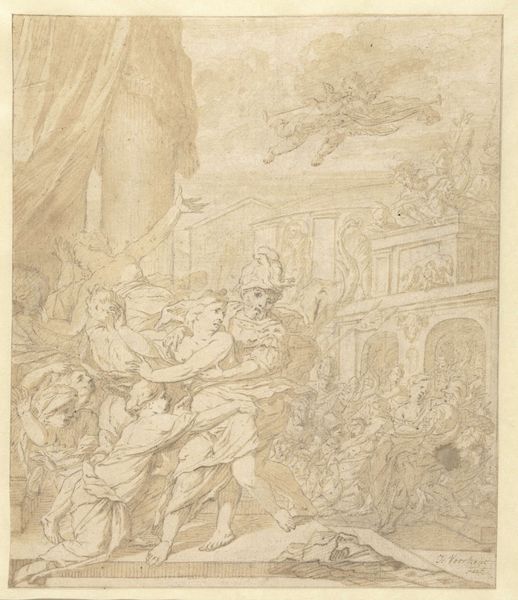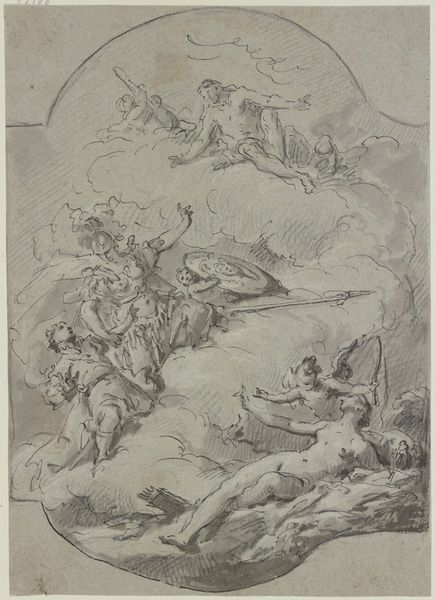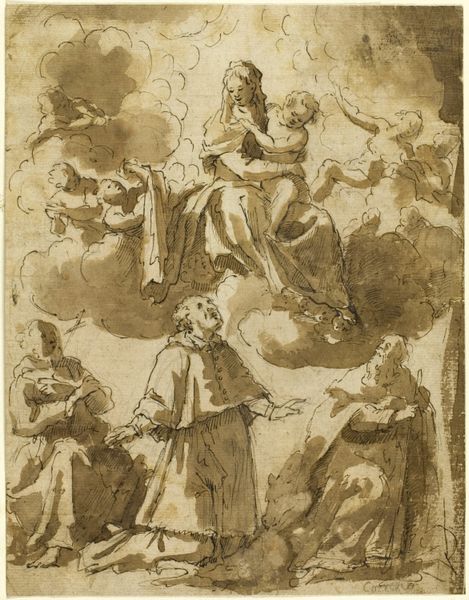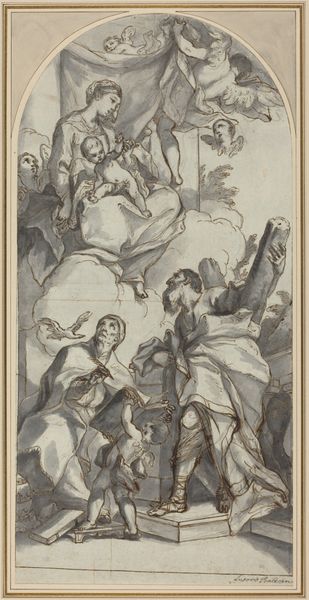
drawing, gouache, paper, ink
#
drawing
#
baroque
#
ink painting
#
gouache
#
figuration
#
paper
#
ink
#
history-painting
Copyright: Public Domain
Curator: Immediately, the tonality strikes me; it feels muted, reverent, yet dynamic with the swirl of forms. Editor: Here we have a drawing titled "Adoration of the Shepherds," attributed to Pietro da Cortona. It employs ink and gouache on paper, currently held at the Städel Museum. Curator: The composition draws my eye upward, a clear diagonal from the lower right to the ethereal cluster of cherubs above. What structural elements jump out at you? Editor: The tangible quality of the paper seems central. The way the ink settles, its viscosity almost suggests the very materiality of labor, connecting the creation process with the humility of the shepherds themselves. There’s a grounding quality to the lines. Curator: An intriguing thought. I see, rather, Cortona utilizing the line to describe form and to guide the viewer through carefully constructed planes of depth and perspective, adhering to Baroque principles. Editor: True, but notice how the roughness of the line, the visible marks of the artist’s hand, resist the polished artifice often associated with the Baroque. There is an unrefined quality to this ink; it shows process. Consider where Cortona obtained the raw materials? Who prepared his paper? Curator: Fascinating. Perhaps we can read into the textural variation. Still, for me, the organization is most impressive; the way the figures cluster yet maintain individualized expressions, echoing psychological undercurrents within the scene, invites symbolic interpretations within religious history painting. Editor: The use of brown ink does create an understated feeling compared to other similar depictions in art history. But knowing about pigments can uncover connections to geographical resources, trading routes… What were these artisans buying with their wages? Curator: An important addition—material production impacting social reality. Perhaps both viewpoints help deepen appreciation for the piece. Editor: Indeed. Seeing art as embedded within networks of materials helps us expand notions of the canon and class in artwork from that era.
Comments
No comments
Be the first to comment and join the conversation on the ultimate creative platform.
